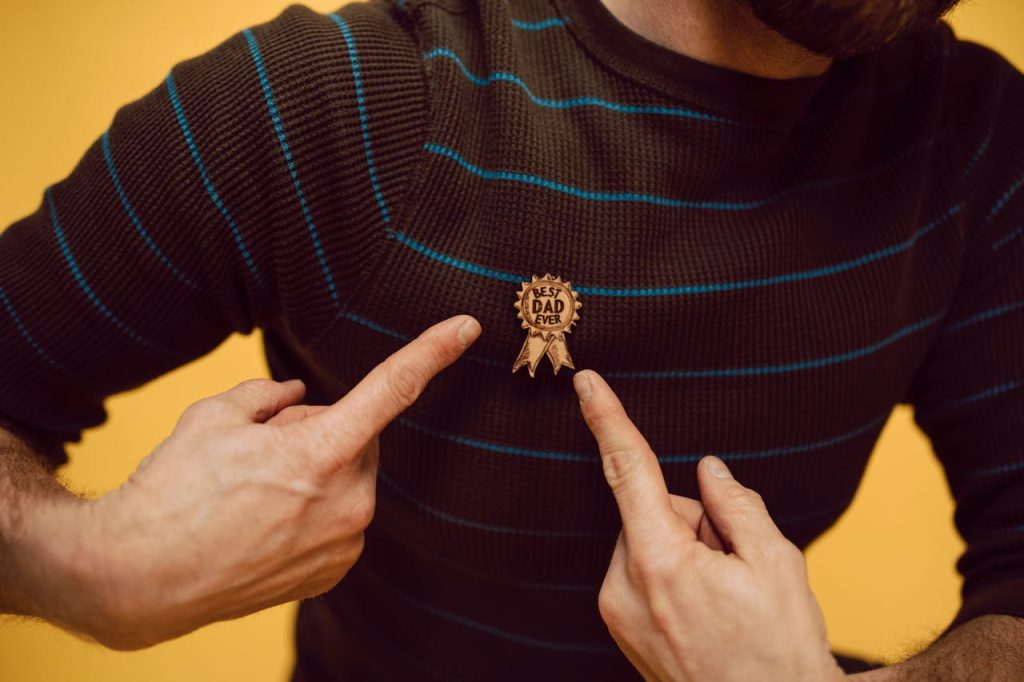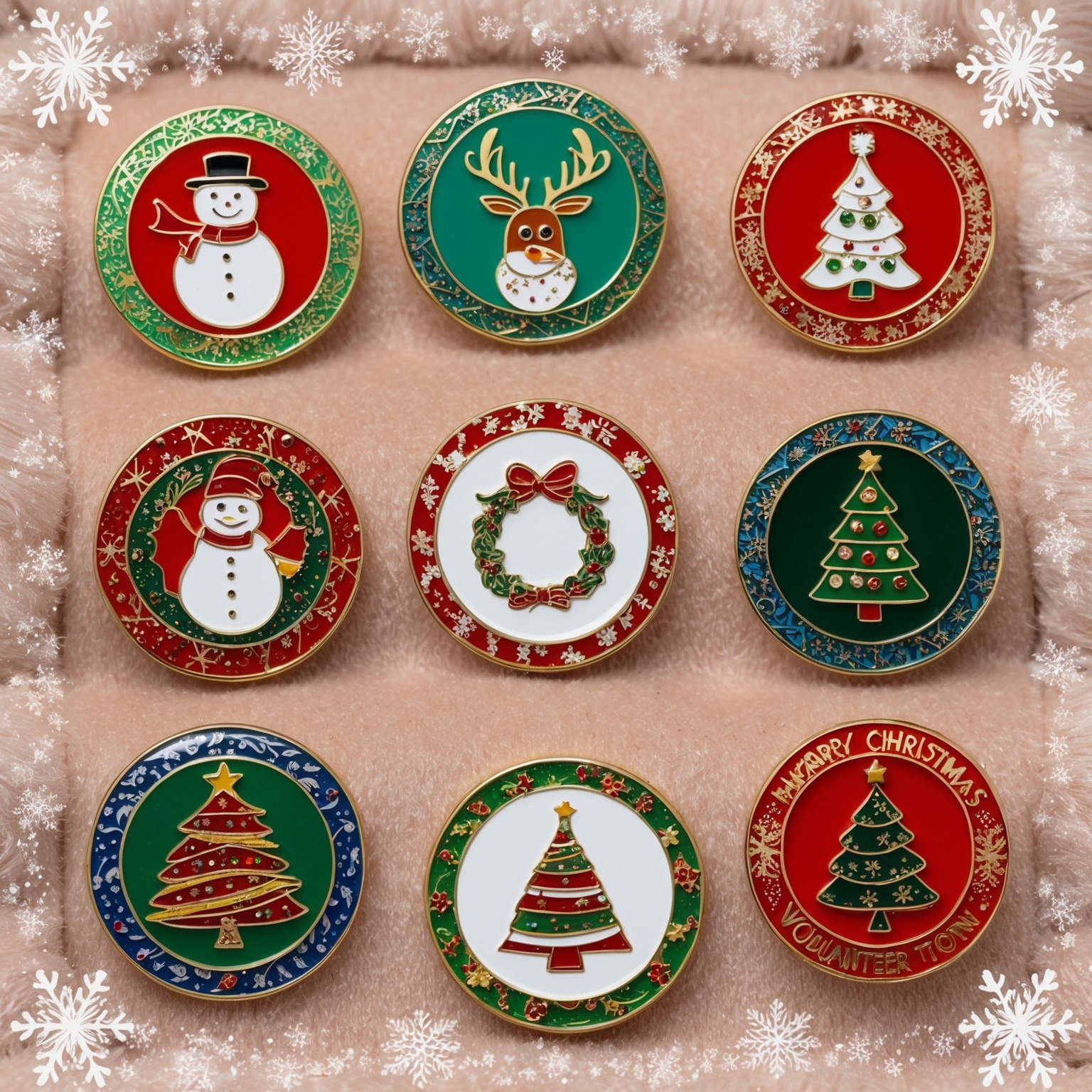Lapel pins have been a symbol of expression, affiliation, and commemoration for over a century. These small, decorative items have adorned the lapels of individuals from all walks of life, representing everything from political movements to personal achievements. As time has passed, a lapel pin have evolved in both design and purpose, reflecting the cultural, social, and technological changes of each era.
In this comprehensive article, we will take a journey through the decades to explore the historical changes and trends in a lapel pin. From their early origins to their role in modern fashion and social movements, we will examine how a lapel pin has been used to communicate identity, loyalty, and solidarity. Whether you’re a seasoned collector, a history enthusiast, or simply curious about the evolution of lapel pins, this guide will provide you with valuable insights into the fascinating history of these iconic accessories.
The Origins of Lapel Pins: Late 19th to Early 20th Century
Lapel pins, in their earliest form, began to gain popularity in the late 19th century. Initially, they were used primarily by military organizations and fraternal societies as symbols of membership and rank. The early lapel pin were often simple in design, but they carried significant meaning for those who wore them.
Military and Fraternal Organizations
In the late 1800s, a lapel pin was commonly used by military personnel to denote rank, unit affiliation, and achievements. These pins were often made from precious metals like gold and silver and featured intricate designs, such as eagles, stars, and crossed swords. Fraternal organizations, such as the Freemasons and the Odd Fellows, also adopted lapel pins as a way to identify members and signify their level of involvement within the group.
The Rise of Political Lapel Pins
As the 20th century began, lapel pins started to be used in the political arena. A political lapel pin became a popular way for supporters to show their allegiance to a particular candidate or party. The pins were often distributed at rallies, parades, and other political events, serving as a visual representation of one’s political beliefs.
One of the earliest examples of a political lapel pin in the United States can be traced back to the 1896 presidential campaign of William McKinley. Supporters of McKinley wore a lapel pin featuring his image, along with campaign slogans like “McKinley and the Gold Standard.” These pins were not only a way to show support but also a means of spreading political messages to a broader audience.
The 1920s and 1930s: Lapel Pins as Symbols of Identity and Affiliation
The 1920s and 1930s were a time of significant social and cultural change, and a lapel pin became an increasingly important way for individuals to express their identities and affiliations. During this period, lapel pins were used by a wide range of organizations, from labor unions to social clubs, as symbols of solidarity and membership.
Labor Unions and Social Movements
In the early 20th century, labor unions played a crucial role in advocating for workers’ rights and better working conditions. Lapel pins became a powerful symbol of union membership and solidarity during this time. Union members wore pins featuring the logos and slogans of their unions as a way to show their commitment to the labor movement.
For example, the American Federation of Labor (AFL) issued a lapel pin to its members, featuring the organization’s logo and the words “Organized Labor.” These pins served as a visual reminder of the collective strength of the labor movement and helped to unite workers across different industries.
Fraternal and Social Organizations
In addition to labor unions, fraternal and social organizations continued to use a lapel pin as symbols of membership and identity. Groups such as the Rotary Club, the Lions Club, and the Elks Lodge issued a lapel pin to their members as a way to signify their affiliation with the organization.
These pins were often worn proudly by members at meetings, events, and social gatherings, helping to create a sense of community and belonging. The designs of these pins were often elaborate, featuring the organization’s emblem, motto, and colors.
The Emergence of Commemorative Lapel Pins
The 1920s and 1930s also saw the rise of a commemorative lapel pin, which were created to mark significant events and milestones. These pins were often distributed at events such as World’s Fairs, expositions, and sporting events, serving as souvenirs and mementos for attendees.
One notable example is a lapel pin created for the 1933-1934 Chicago World’s Fair, also known as the Century of Progress Exposition. These pins featured the fair’s logo and were sold to visitors as a keepsake of their experience. The popularity of commemorative lapel pins during this time laid the groundwork for the widespread use of pins as souvenirs in the decades to come.
The 1940s and 1950s: Lapel Pins During Wartime and Post-War America
The 1940s were dominated by World War II, and a lapel pin played a significant role in the war effort. During this time, pins were used to boost morale, support the troops, and promote patriotic themes. The post-war era of the 1950s saw lapel pins continue to evolve as symbols of pride and achievement.
World War II and Patriotic Lapel Pins
During World War II, lapel pins became a common way for civilians to show their support for the war effort. Patriotic pins featuring the American flag, eagles, and other national symbols were widely worn by both men and women. These pins often included slogans such as “Remember Pearl Harbor” and “Support Our Troops,” serving as a reminder of the importance of unity and patriotism during the war.
In addition to patriotic pins, the military continued to issue a lapel pin to soldiers, representing their branch of service, unit, and rank. These pins were often worn on uniforms and civilian clothing alike, symbolizing the individual’s service and commitment to the nation.
The Post-War Boom and Corporate Lapel Pins
The post-war era of the 1950s brought economic prosperity and a renewed sense of optimism to the United States. During this time, a lapel pin began to be used more frequently by corporations and businesses as a way to recognize employee achievements and promote brand loyalty.
Corporate lapel pins were often awarded to employees for reaching milestones, such as years of service, sales targets, or safety records. These pins were typically made from gold or silver and featured the company’s logo, along with the employee’s name or the achievement being recognized. The practice of awarding corporate lapel pins helped to foster a sense of pride and loyalty among employees.
The Rise of Collectible Lapel Pins
The 1950s also saw the emergence of collectible lapel pins, particularly in the realm of sports. Baseball teams, such as the New York Yankees and the Brooklyn Dodgers, began producing a lapel pin featuring the team’s logo and colors. These pins were sold at ballparks and became popular among fans as a way to show their support for their favorite team.
Collectible lapel pins continued to gain popularity throughout the decade, with pins being produced for a wide range of sports teams, events, and cultural phenomena. The practice of collecting and trading a lapel pin laid the foundation for the pin trading culture that would flourish in later decades.
The 1960s and 1970s: Lapel Pins as Tools of Social Change and Expression
The 1960s and 1970s were decades of significant social and political upheaval, and lapel pins played a crucial role in the movements and countercultures that defined the era. Pins became powerful tools for expressing dissent, solidarity, and identity, reflecting the changing values and attitudes of society.
The Civil Rights Movement
The Civil Rights Movement of the 1960s sought to end racial segregation and discrimination in the United States, and lapel pins became a common way for activists to show their support for the cause. Pins featuring slogans such as “Freedom Now” and “End Segregation” were worn by both black and white activists as they participated in marches, sit-ins, and other forms of protest.
One of the most iconic symbols of the Civil Rights Movement was the “I AM A MAN” pin, worn by striking sanitation workers in Memphis, Tennessee, in 1968. The pin, along with the accompanying placards, became a powerful symbol of the fight for dignity and equality for African Americans.
Anti-War and Countercultural Movements
The Vietnam War and the broader countercultural movements of the 1960s and 1970s also saw the widespread use of lapel pins as tools of protest and expression. Anti-war pins featuring peace symbols, anti-draft slogans, and calls for an end to the war were worn by activists and members of the counterculture.
One of the most recognizable symbols of the anti-war movement was the peace sign, which became a popular motif on lapel pins, buttons, and other forms of protest art. The simplicity and universality of the peace sign made it a powerful symbol of opposition to the war and a call for nonviolence.
Feminism and Women’s Liberation
The feminist movement of the 1970s, which sought to challenge traditional gender roles and fight for women’s rights, also made use of lapel pins as symbols of solidarity and empowerment. Pins featuring slogans such as “Women’s Liberation,” “Equal Pay,” and “ERA YES” were worn by activists advocating for gender equality.
The symbol of the raised fist, often used in conjunction with the female gender symbol, became a powerful image representing the struggle for women’s rights. This symbol was frequently featured on lapel pins and became an enduring icon of the feminist movement.
The 1980s and 1990s: The Rise of Pin Trading and Pop Culture Lapel Pins
The 1980s and 1990s were decades of commercialization, consumerism, and the rise of global pop culture. During this time, lapel pins became a popular form of collectible memorabilia, and pin trading emerged as a widespread hobby. The influence of pop culture, sports, and corporate branding also shaped the designs and trends of lapel pins during these decades.
The Disney Pin Trading Phenomenon
One of the most significant developments in lapel pin collecting during the 1990s was the emergence of Disney pin trading. What began as a simple souvenir item quickly grew into a global phenomenon, with collectors trading pins at Disney theme parks, online, and at special events.
Disney pins often featured beloved characters, attractions, and limited-edition designs, making them highly sought after by collectors. The practice of trading pins with other park visitors and Disney cast members added an interactive and social dimension to the hobby, creating a vibrant community of collectors.
Sports Pins and the Olympics
The 1980s and 1990s also saw the rise of sports-related lapel pins, particularly in connection with major events such as the Olympics. The Olympic Games became a major platform for pin trading, with athletes, officials, and spectators exchanging pins as a way to commemorate the event and build international friendships.
Olympic pins featured the logos of the host city, the Olympic rings, and symbols representing the participating countries. Collectors sought to acquire pins from each participating nation, making the Olympic Games a significant event in the world of lapel pin collecting.
Corporate and Brand Lapel Pins
The 1980s and 1990s were marked by the rise of corporate branding and consumer culture, and lapel pins became a popular way for companies to promote their brands and products. Companies produced lapel pins featuring their logos, mascots, and slogans, which were often distributed as promotional items or sold as merchandise.
Fast-food chains, soft drink companies, and entertainment brands were particularly prolific in producing lapel pins, capitalizing on the growing trend of collecting and trading. These pins became a form of advertising, as well as a way for consumers to express their loyalty to a particular brand.
Political and Social Causes
The 1980s and 1990s also saw the continued use of lapel pins as symbols of political and social causes. Pins promoting environmental awareness, LGBTQ+ rights, and AIDS awareness became increasingly common during this time. The red ribbon lapel pin, symbolizing support for people living with HIV/AIDS, became an iconic symbol of solidarity and activism.
Political campaigns continued to use lapel pins as a way to engage voters and build support. Pins featuring campaign slogans, candidate portraits, and party logos were distributed at rallies, conventions, and door-to-door canvassing efforts.
The 21st Century: Lapel Pins in the Digital Age and Beyond
As we entered the 21st century, the role and design of lapel pins continued to evolve, influenced by advancements in technology, shifts in cultural trends, and the rise of social media. Lapel pins have remained a popular form of expression, with new trends and innovations shaping the future of the hobby.
Custom and Artist-Designed Lapel Pins
The advent of digital design tools and online marketplaces has made it easier than ever for independent artists and designers to create and sell custom lapel pins. This has led to a surge in the popularity of artist-designed pins, which often feature unique, creative, and sometimes subversive designs.
Platforms like Etsy and Instagram have become hubs for discovering and purchasing custom lapel pins, allowing collectors to support independent creators and find pins that reflect their personal tastes and interests. This trend has democratized the creation of lapel pins, allowing for a greater diversity of styles and themes.
The Resurgence of Pin Trading
The 21st century has seen a resurgence in pin trading, fueled in part by the continued popularity of Disney pin trading and the growth of online communities dedicated to the hobby. Social media platforms like Facebook, Twitter, and Pinterest have made it easier for collectors to connect, trade, and share their collections with others around the world.
Pin trading events, both online and in-person, have become popular gatherings for enthusiasts to meet, trade, and acquire new pins. The sense of community and camaraderie that comes with pin trading has helped to sustain the hobby and attract new collectors.
Political and Social Advocacy
Lapel pins continue to play a role in political and social advocacy in the 21st century. Activists and organizations use pins to raise awareness for causes such as climate change, racial justice, and gender equality. The use of lapel pins in protests, rallies, and campaigns provides a visible and powerful way to communicate messages of solidarity and resistance.
The pink pussyhat pin, worn during the Women’s March in 2017, is one example of how lapel pins have been used to symbolize a movement. The pin, featuring the iconic pink hat, became a symbol of resistance to gender inequality and a call for women’s rights.
Lapel Pins in Fashion
In recent years, lapel pins have also made a comeback in the world of fashion. Designers and fashion brands have incorporated pins into their collections, using them as accessories to add personality and flair to outfits. From high-end fashion houses to streetwear brands, lapel pins have become a stylish way to make a statement and accessorize.
Enamel pins, in particular, have gained popularity as a fashionable accessory. These pins often feature playful, ironic, or pop culture-inspired designs and are worn on jackets, backpacks, and hats. The versatility and affordability of enamel pins have made them a popular choice for fashion-conscious individuals looking to express their style.
The Future of Lapel Pins: Trends and Innovations
As we look to the future, lapel pins are likely to continue evolving in response to new trends, technologies, and cultural shifts. Here are some potential developments and trends that may shape the future of lapel pins:
1. Eco-Friendly and Sustainable Pins
As environmental consciousness grows, there is increasing demand for eco-friendly and sustainable lapel pins. Companies and designers may start producing pins made from recycled materials, biodegradable plastics, or ethically sourced metals. Additionally, packaging for lapel pins may become more sustainable, with a focus on reducing waste and using environmentally friendly materials.
2. Interactive and Smart Pins
Advances in technology could lead to the creation of interactive or “smart” lapel pins. These pins might incorporate features such as NFC (Near Field Communication) chips, allowing wearers to tap their pins to smartphones to access digital content, such as videos, websites, or social media profiles. This innovation could add a new dimension to pin collecting, blending physical and digital experiences.
3. Personalized and Customizable Pins
As customization continues to be a growing trend, lapel pins may become more personalized and customizable. Collectors might have the option to design their own pins online, choosing colors, shapes, and designs that reflect their individual style. This trend could also extend to mass customization, where brands offer limited-edition pins with customizable elements, allowing customers to create one-of-a-kind pieces.
4. Collaborations and Limited Editions
Collaborations between artists, designers, and brands are likely to continue driving the popularity of lapel pins. Limited-edition releases, featuring unique designs and collaborations with popular figures, can create excitement and exclusivity in the pin collecting community. These collaborations may also extend to cross-industry partnerships, such as collaborations between fashion brands and tech companies.
5. Virtual and Augmented Reality Pins
As virtual and augmented reality technologies advance, we may see the development of virtual or augmented reality lapel pins. Collectors could use AR devices to view virtual pins in their physical space or interact with digital versions of their pins. This innovation could open up new possibilities for displaying, trading, and experiencing lapel pins in a digital environment.
Lapel Pins as Timeless Symbols of Expression
Lapel pins have a rich and varied history, reflecting the cultural, social, and technological changes of each decade. From their origins as symbols of military and fraternal affiliation to their role in modern fashion and social movements, lapel pins have remained a powerful form of expression and identity.
As we move forward, lapel pins will likely continue to evolve, adapting to new trends and innovations while retaining their timeless appeal. Whether you’re a collector, a fashion enthusiast, or an activist, lapel pins offer a unique way to connect with the past, celebrate the present, and express your individuality.
By exploring the historical changes and trends in lapel pins, we gain a deeper appreciation for these small but significant pieces of art. Lapel pins remind us that even the smallest symbols can carry great meaning, and that they will continue to be cherished and collected for generations to come.
If you are interested in buying high quality custom trading pins, you can call us at 1-800-641-1299 or fill out a FREE quote form.







